… says 56 year old Austrian circumnavigator and two time Vendeé Globe-participant Norbert Sedlacek. When I was visiting the French Atlantic coast, having a look at Amel yachts and JPK I was also visiting Les Sables d´Ollonne, where I saw a strange, fascinating boat mooring without a rigg: That´s the Open 60 AAL of Innovation Yachts, owned and sailed by Norbert. Visiting the boat I spoke to him about his great sailing project and the exciting racing yacht.
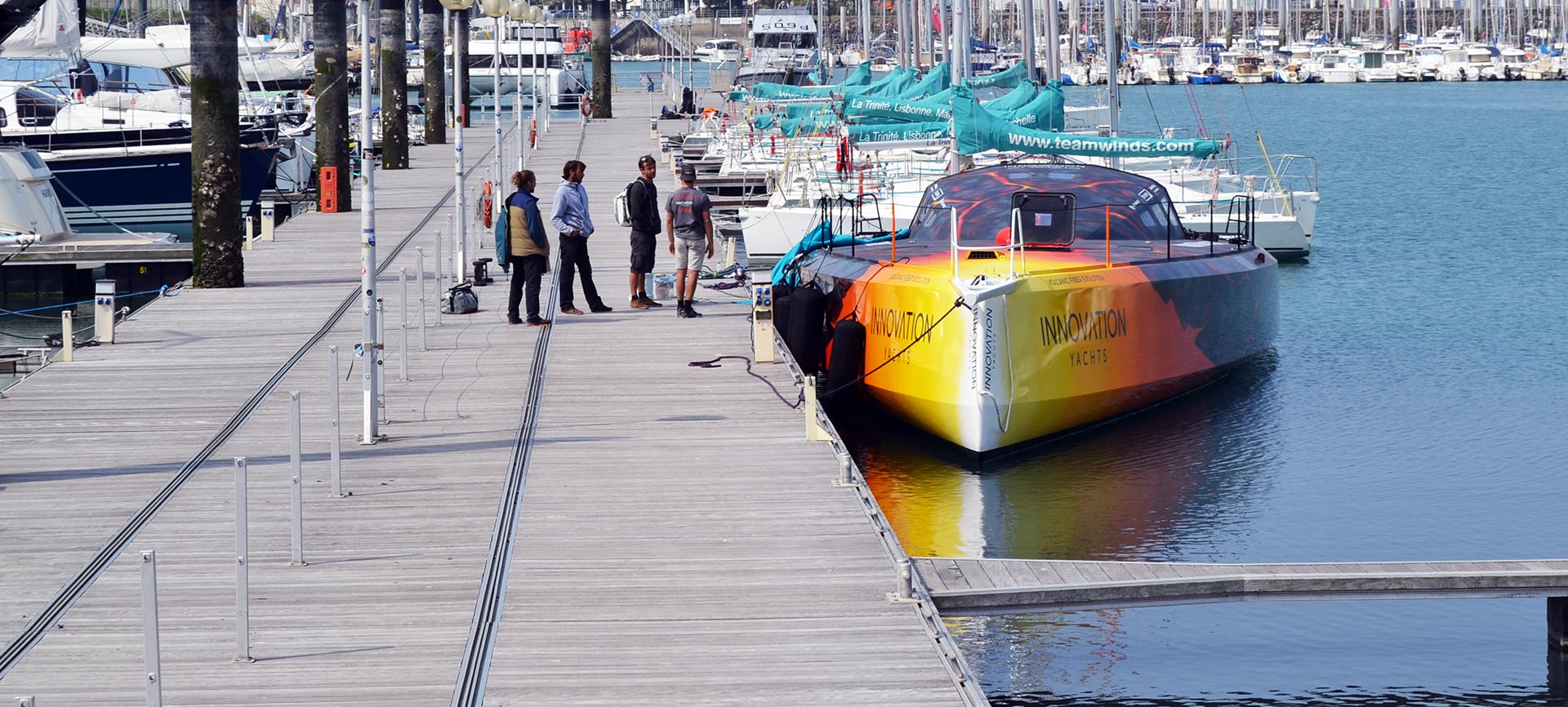
NO FRILLS SAILING | Lars Reisberg: “Norbert, I am fascinated by the Open 60 boat of yours and Innovation Yachts and your aim to introduce new materials to yachting. What is pushing you to test these new concepts by taking such a spectacular test?”
Norbert Sedlacek: “For me it´s basically my interest in my myself and the development of my own person in a sportive way and to seek the limits of the technically feasible. It´s like fathoming out what is manageable and what not.”
NFS.com: “Calling your route “spectacular” would be a mere understatement: You are going to sail down to the Antarctic continent, sail all around it, then head up North to sail through the North-West-Passage to head back home … what are the most demanding parts of this and where is the attraction in doing such a venture?”
Norbert Sedlacek: “Well, first of all I see the attraction of this project in setting a course that up until now hasn´t been taken at all. Sad to say but the ever advancing global warming of our planet makes this trip possible. It´s weird to say so but I am looking forward to be able to pointing to this problem that has been marked critical by so many experts. I want to show what global warming means. When it comes to sailing I am sure the Arctic waters are the most demanding miles of the whole trip. The confrontation with ice and growlers will make the higher Southern latitudes dangerous. Not to mention the high waves.”
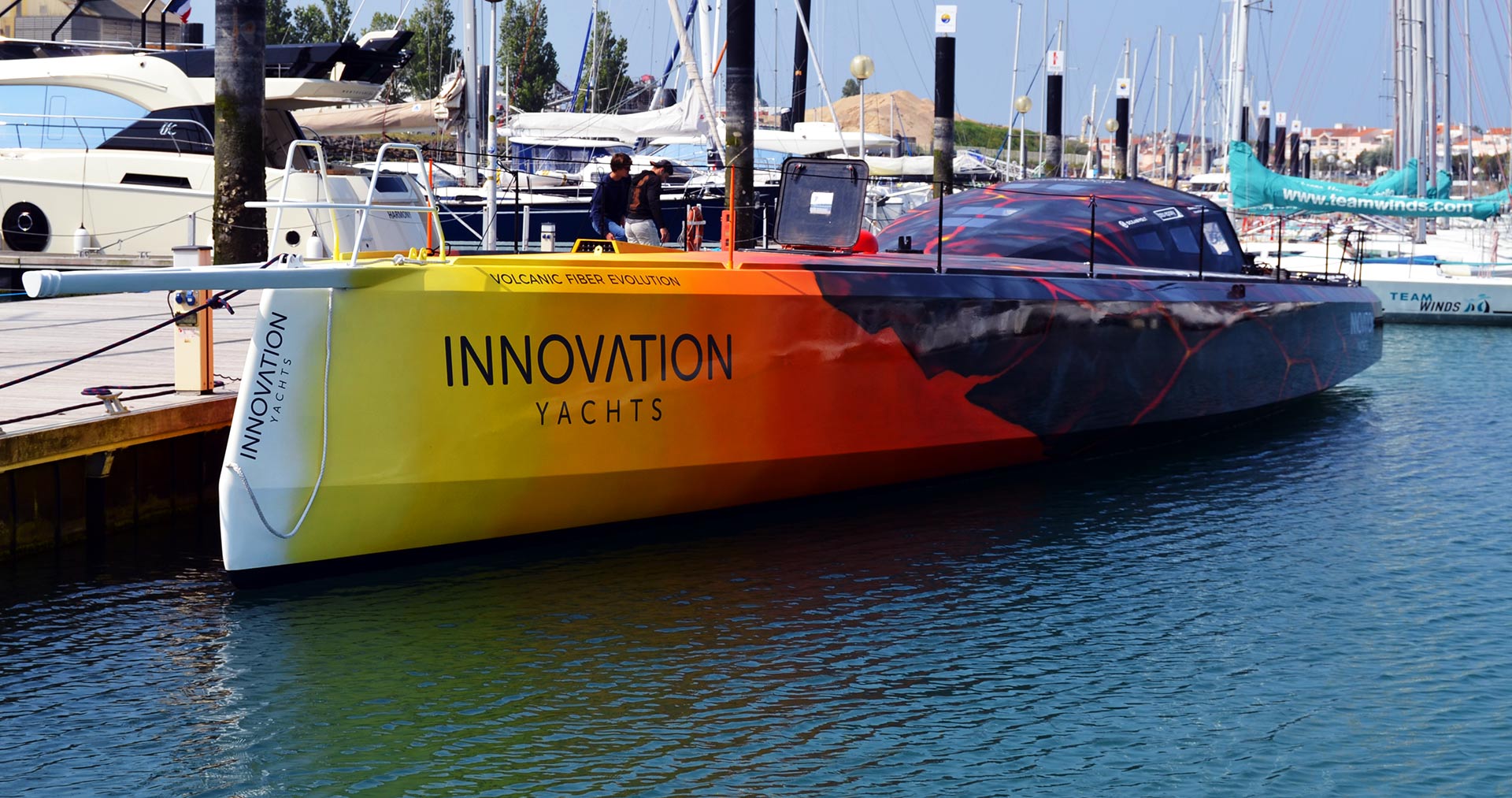
NFS.com: “To which part of this adventure are you most looking forward to?.”
Norbert Sedlacek: “That´s easy: I am most touched by the idea to sail through the Arctic waters. That´s because I have never been there in my whole life.”
NFS.com: “That´s the most beautiful part and certainly the most dangerous …”
Norbert Sedlacek: “… the North-West-Passage? Yes indeed, but the Bering Sea, the Southern Atlantic Ocean around the Cape Horn and the high Southern latitudes are not less menacing.”
NFS.com: “How long are you planning to be underway mastering these approximately 34.000 miles? Which means of communication do you have with you and where can we monitor your progress?”
Norbert Sedlacek: “We are calculating the whole trip with something around six months in total. That´s half of a year. Iridium satellite communication will be the tool of choice when it comes to calling my shore team. People interested in my venture can be looking forward to receiving daily updates of my progress on my website.
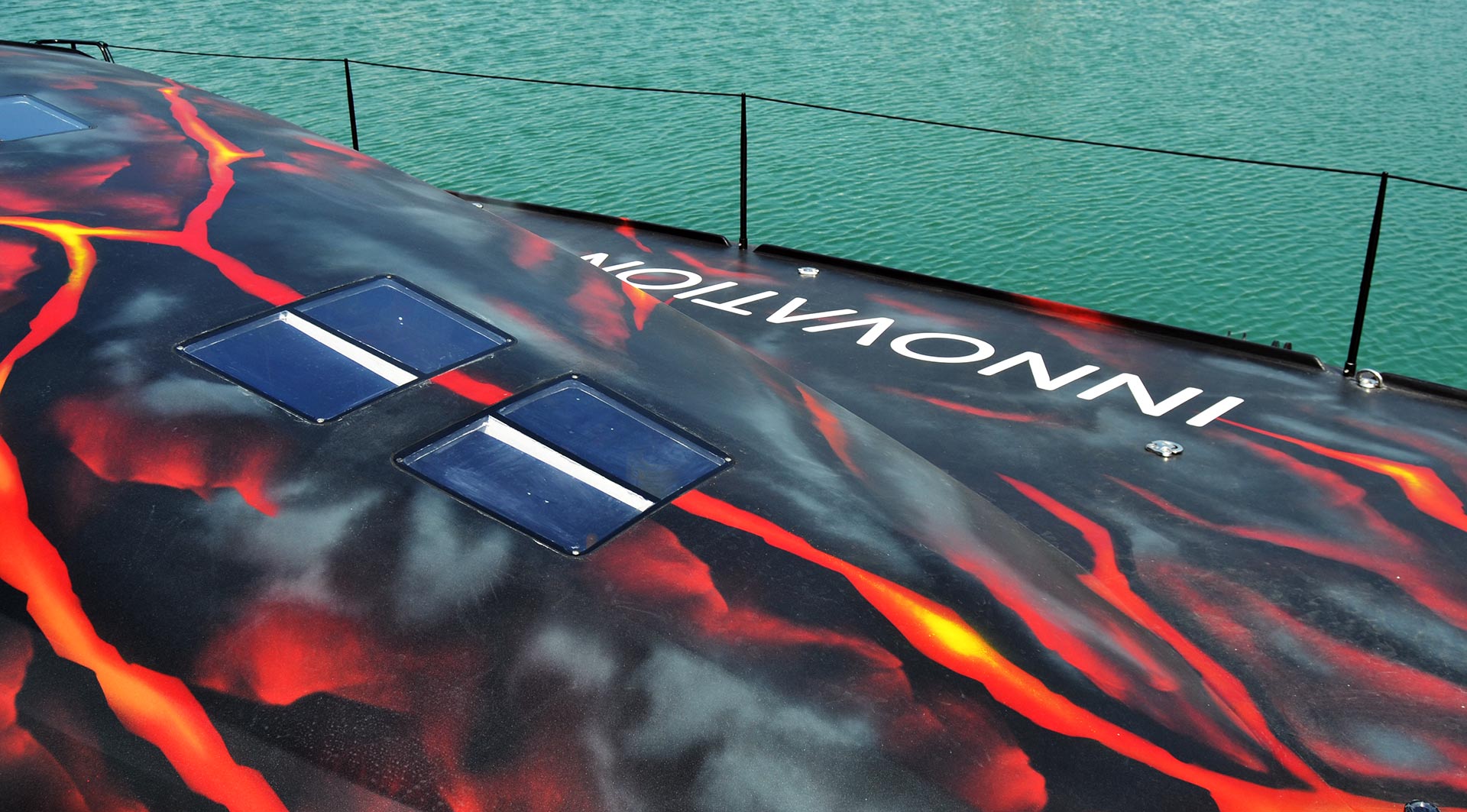
NFS.com: “As I understood, you are not “just” sailing the whole time?”
Norbert Sedlacek: “That is correct. I do have a bunch of products aboard which are in an experimental stage which will be thoroughly tested throughout my journey. That´s for example some sails produced with a new hybrid production technique, hydro-generators with intelligent adjusting props. A fair amount of the time spent underway will be utilized to go after these experiments, to analyse and optimise these things.”
NFS.com: “Speaking of optimization: How are you adjusting the sailing route to the preferred months of sailing in the remote areas like Cape Horn or the North-West-Passage?”
Norbert Sedlacek: “It all starts with the sailplan. We have a very, very powerful rigging on the Open 60 AAL and I have a motto that goes “reefing is possible, but increasing sail area is not”. (laughs). It´s my job to adjust the rigg to the different wind courses and sea conditions which can be expected during the venture.”
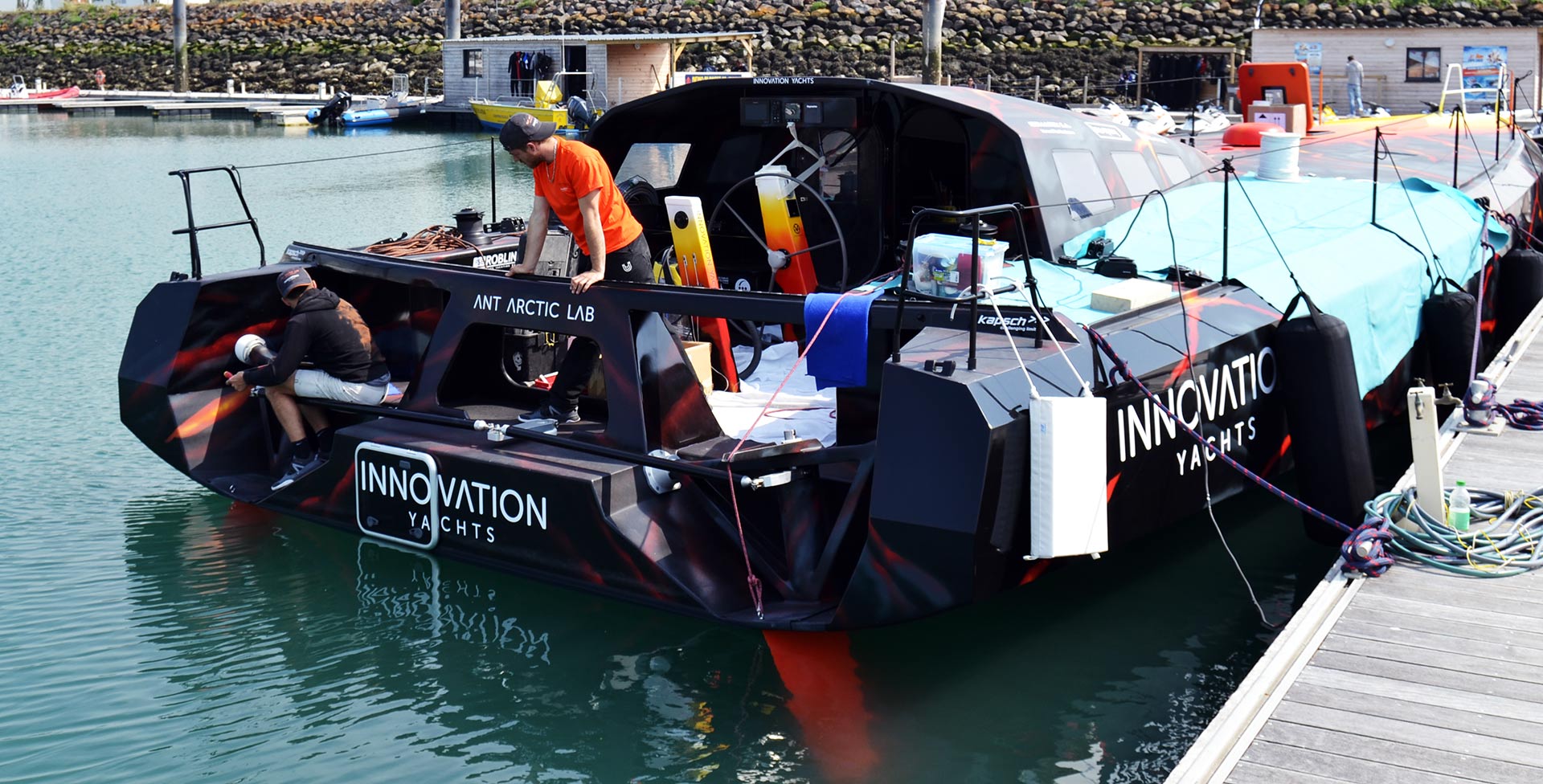
NFS.com: “Let´s jump back to the North-West-Passage: Which special sources for ice- and weather forecast do you utilize and what is done to prevent the Open 60 AAL from collisions with icebergs and growlers?”
Norbert Sedlacek: “When it comes to ice and iceberg-/growler-movements I am relying on Russian and Canadian observation services. When I am there I will also tap into information provided by the Canadian Coast Guard. Collisions with growlers can happen and that is why we have fitted the boat with three very, very solid dagger boards which will keep the ice away from the keel fin. In addition to this the boat has a very strong, monolithic lamination in the keel-area of the hull.”
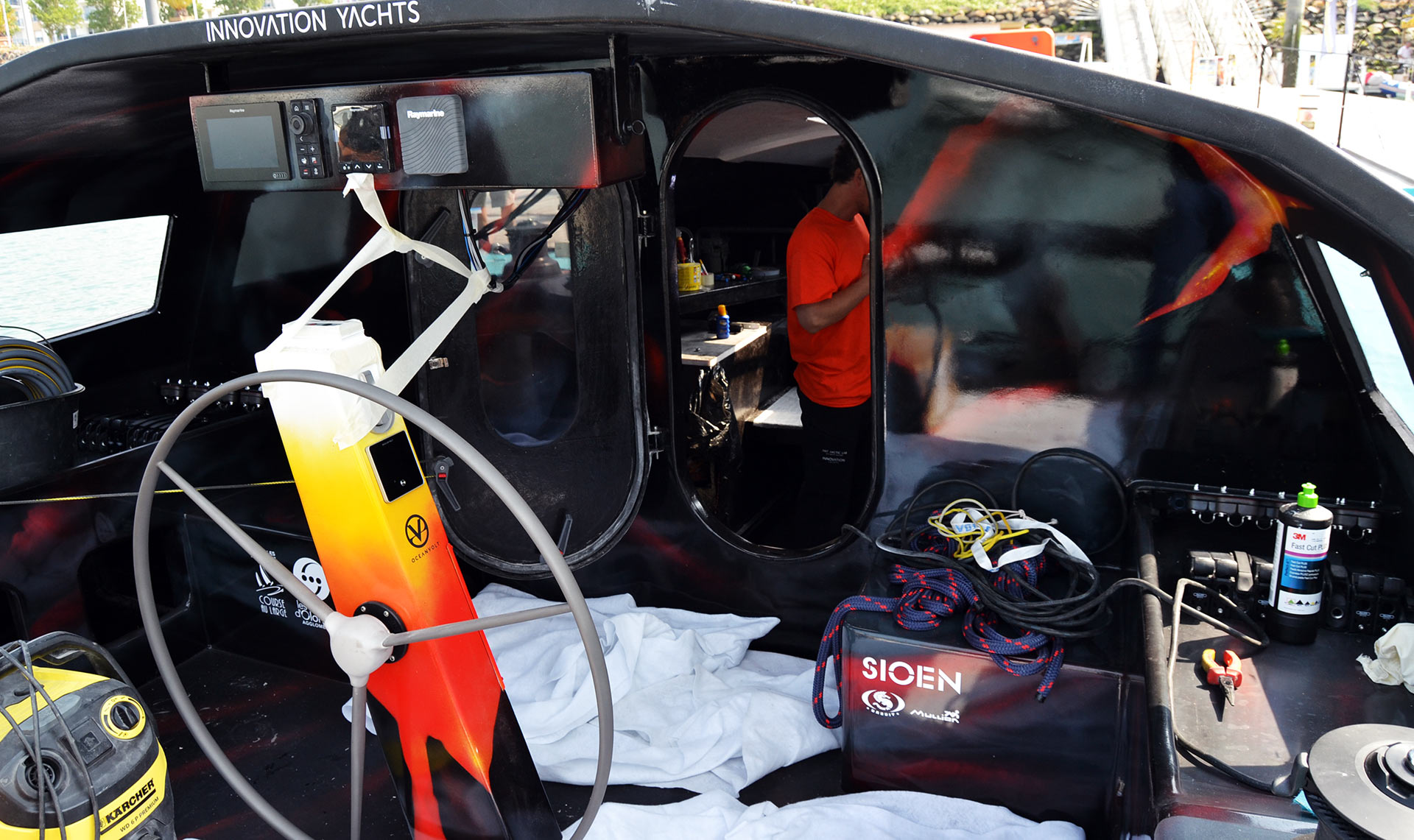
NFS.com: “The Open 60 AAL is made of vulcanic fibres which are substitutes for glass fibres and has a sandwich core of Balsa wood. Could you go into more detail referring to hardiness and durability of this material compared to conventional materials used in yacht building?”
Norbert Sedlacek: “On the one hand the solidity of the laminate is defined by the fibres we are using: Vulcanic fibres are completely water-repellent, UV-resistant and have a very hard surface structure. The Epoxy resin we use is of the highest grade and has no thinning agents at all – it is therefore producing a completely dense and closed laminate. In addition to this we have the connection of vulcanic fibre and Balsa core wood which is very pressure resistant and shock absorbing. A very good combination, I am sure!”
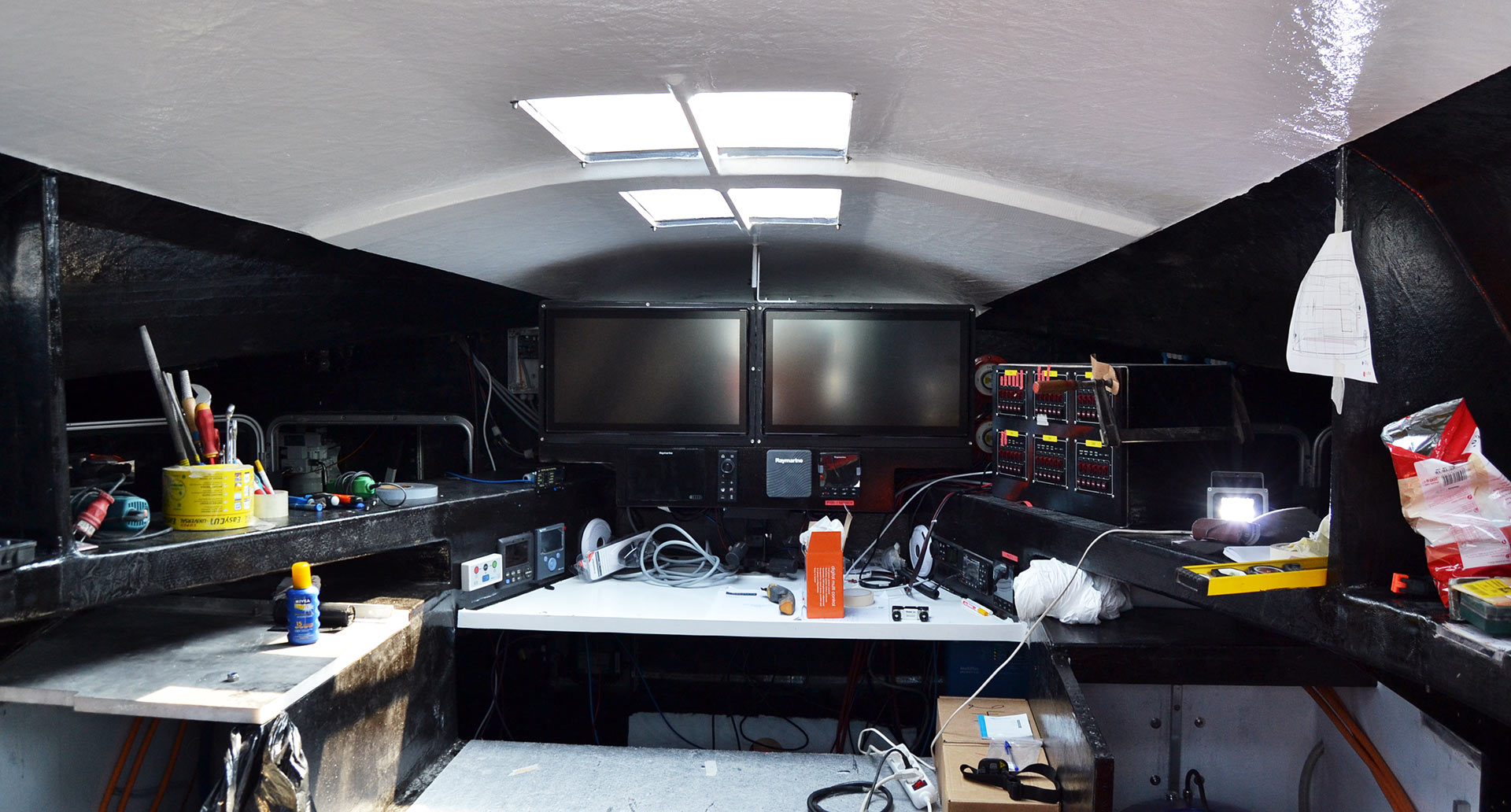
NFS.com: “What will be the sleep- and recovery-management like during your trip?”
Norbert Sedlacek: “I will work when it is needed. Calming down and getting a little bit of rest will be made by powernapping and whenever it is possible. In the end the weather and the technical condition of the boat will dictate whether there is stress or spare time.”
NFS.com: “Tell me about your provisioning system during the trip.”
Norbert Sedlacek: “Water will be provided by two watermakers. The desalinated water will be pimped with a number of micronutrients, tea, coffee or hot chocolate. I do not have much alcoholic stuff aboard, just a handful of smaller bottles for occasions like birthdays, Christmas or such. When it comes to eating out aboard I will handle this the same like during my Vendeé Globe-participations. I do have basic food like noodles and rice. I have also a lot of dried fruit, cereals chocolate and some specialties to keep up the mood.”
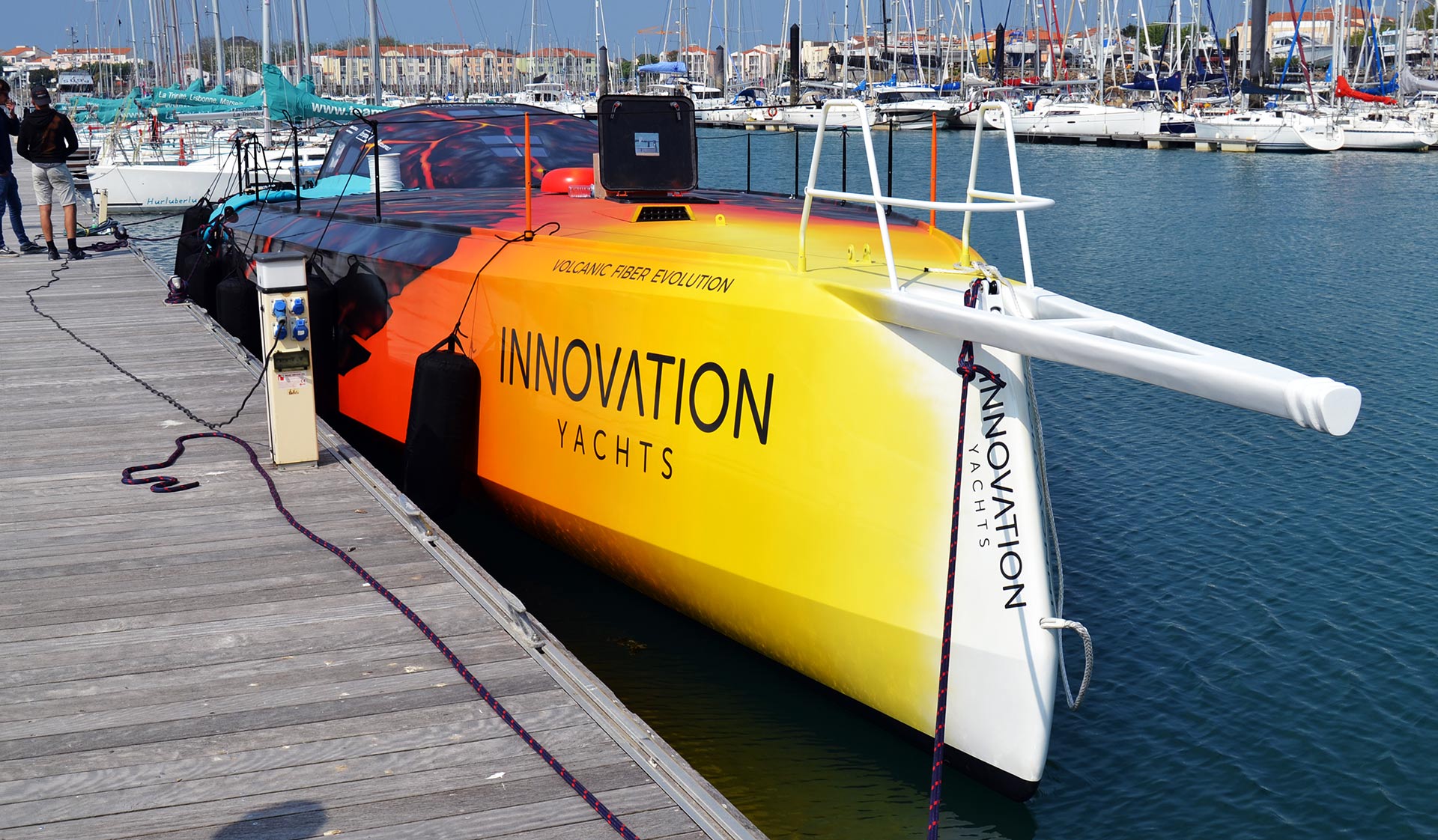
NFS.com: “In the end, Norbert, what would be your message to my readers?”
Norbert Sedlacek: “Well, I hope that I will not just break a record in sailing but most of all that the success of this project will be a kind of signal shot and a wake-up call for a future with sustainable yacht building techniques with eco-friendly materials and – most of all – materials that can be recycled. If Innovation Yachts can take on a leading role in this, that would make the success a huge one.”
Norbert, thanks for this interesting interview and the insights into your project. All the best, fair winds and a safe, fast voyage!
Like sailing yachts and racing boats? You will probably like these articles too:
A day at X-Yachts in Haderslev/Denmark
Lizzy Foreman is practicing single hand-sailing skills on an Open 60 IMOCA
First time sailing a Class 40 racing yacht
